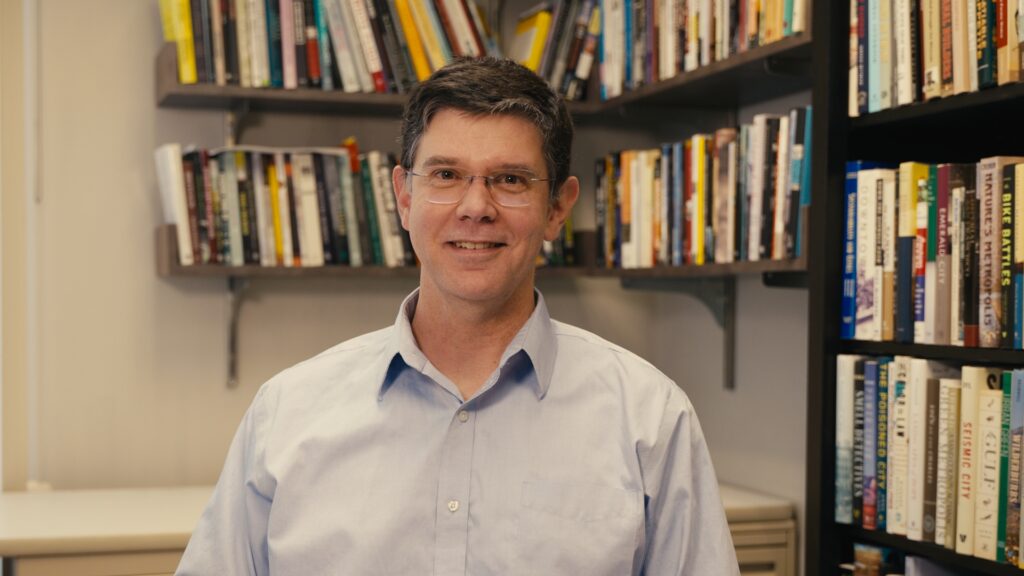
By Talia Bank ’23
“The theory is that if enough people demand something that’s more environmentally responsible, then the supply side will meet demand. There is some truth to these things, but ultimately these consumer solutions just end up creating new consumer markets.” —Professor Wells
Consumerism is everywhere. For so many of us, purchasing goods is a regular part of everyday life, and a market oriented around constant consumption normalizes the status quo and encourages us to buy. But the implications go far beyond individual transactions.
This spring, the environmental studies course “Consumer Nation: American Consumer Culture in the 20th Century” is digging deep into how consumerism developed and how those lessons apply to the ongoing struggle against environmental degradation.

“The core ideas for the class are that consumer capitalism has big implications for the environment, and environmentalists also use a lot of consumerist frameworks for thinking about how to solve various environmental problems,” Professor Chris Wells says. “The theory is that if enough people demand something that’s more environmentally responsible, then the supply side will meet demand. There is some truth to these things, but ultimately these consumer solutions just end up creating new consumer markets.”
Those more environmentally friendly alternatives may include, for example, buying foods from local or organic sources. But while Wells notes that these consumer choices can have a real impact, they tend not to shake the foundations of the same conventional markets from which they spring. “It has real-world impact, but it’s not an attack on the system. It’s active participation within the system and the constraints that it imposes,” Wells says.
As his students grapple with individual choices, Wells wants their choices to be grounded in an understanding of those bigger systems. Solutions that meaningfully challenge consumerism need to be rooted, he says, in an understanding of consumerism’s history and the way it has developed into a cultural value. For that reason, a large part of the course focuses on how consumer capitalism has come to absorb even this resistance to its conventional markets. This requires examining the long, complicated processes that lead to the finished products on store shelves. The steps—including raw material extraction, manufacturing, and marketing—often rely on exploitative labor practices and are the results of specific historical choices.
Throughout the 1970s, for example, Wells describes a stronger government focus on industry regulation. By the 1990s, the relationship between government and industry had become more collaborative, focused more on market innovation and developing consumerist alternatives rather than regulating the industry.
“That [shift] has an intellectual and political history to it,” Wells says, “but the other piece that is equally important is asking the historical questions of how and why the material culture has changed as it has.”
Tackling these questions in an academic setting, it can be easy to lose sight of individual consumer roles. But for Megan Twomey ’25 (Minneapolis), delving into the past leads her to question not just her own buying and spending but also the kinds of products being offered in the first place.
“It’s interesting seeing the way our consumer habits have changed over time,” Twomey says. “I look at things now and ask myself, ‘Is that really necessary? This is really bad for the environment, so do we actually need this?’ It makes you think.”
For the course’s final project, students choose a product and study how the production, manufacturing, marketing, and consumption of that item has changed over time. The exercise highlights the ubiquity of consumerism, but also the material history behind today’s products.
“There are so many different stories we can tell about the material goods in our lives. For example, there’s a potential story about reusing and recycling each product’s materials, but also a story about its marketing history and consumption patterns,” Wells says. “You can make sense of these concepts about manufacturing and distribution, marketing and identity, how markets work, and the environmental implications of all of that—all through the lens of a single object.”
May 22 2023
Back to top




